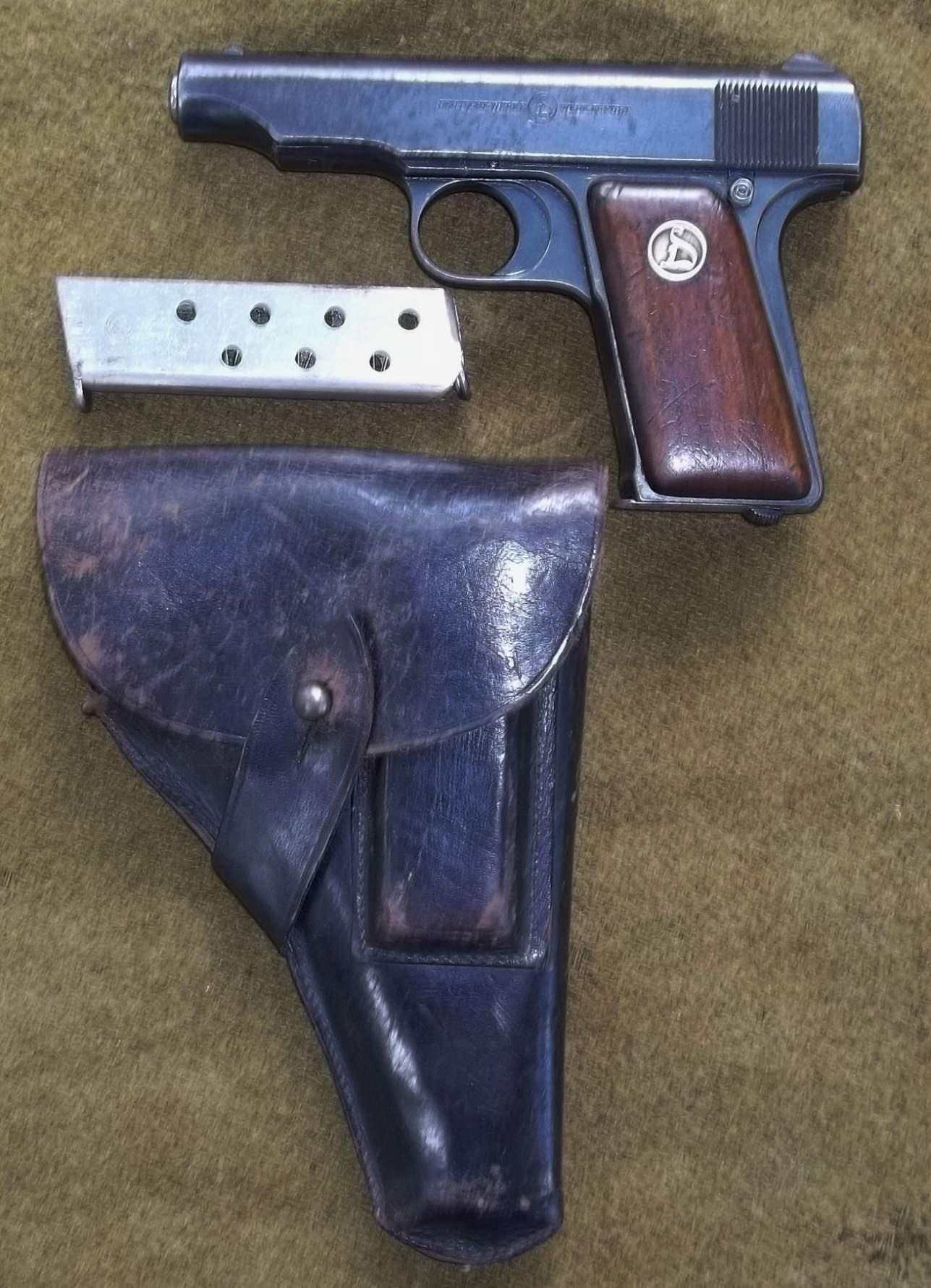
/https://www.thestar.com/content/dam/thestar/news/investigations/2013/04/12/star_investigation_star_reporters_buy_cheap_us_gun_no_id_required/gun.jpg)
No Ortgies pistol was produced with a chrome finish or, aside from one known salesman’s sample, with factory engraving. The latter finish could be either matte or bright. In keeping with prevalent economics in Germany at the time, factory finishes were limited to bluing or, rarely, nickel. For a short time thereafter, the slide marking was changed to “Deutsche Werke Aktiengesellschaft Berlin” before changing again to “Deutsche Werke Aktiengesellschaft Werke Erfurt,” ultimately shortened to “Deutsche Werke – Werke Erfurt.” Deutsche Werke pistols continued to feature the “HO” brass grip inset until relatively late in their production, when they substituted one with a new trademark depicting a stylized crouching cat with long tail forming an S-curve over its back. – Erfurt” on their slides and a circular brass insert in their grips marked with a stylized “HO.” Ortgies died later that year, and eventually production of his pistol passed to Deutsche Werke, a shipbuilding company headquartered in Berlin. After the war, he moved to Erfurt, Germany, where in 1919 he commenced production of the pistol in his own factory. Heinrich Ortgies designed the pistol while living in Liège, Belgium during World War I. John Dillinger’s Ortgies (circled) From some museum One side of the magazine was marked for 7.65 mm and featured seven holes showing the positions that cartridges of that size would occupy when loaded the other side had similar holes and markings for 9 mm cartridges. To disengage the safety, a shooter simply would squeeze the grip, pressing the lever forward and locking it flush with the back of the pistol.Īt least the earlier Ortgies magazines could accommodate both 7.65 and 9 mm ammunition and were interchangeable between pistols of either calibre. Thus, engaging the safety simultaneously reduced tension on the firing pin spring. The safety was a lever inset into the back of the grip and, with the gun cocked, forced backward out of the grip into the “safe” position by spring tension from the firing pin upon depression of a button under the slide.

Unusual design features included the safety and the magazine. As in early Colt and Browning pocket pistols, the Ortgies striker also operated as an ejector as the slide traveled backwards after discharge. The hammerless action depended on a spring-loaded striker to fire the cartridge. Metal components were forged or machined, and assembly in general made no use of screws, even securing the wooden grips with metal clips, although some examples do incorporate a single screw for that purpose. Although not expensive, at the time it was of advanced design and high quality construction with relatively few parts, well sealed against dirt. The pistol was produced in 6.35 mm, 7.65 mm, and 9 mm variants. Inexpensive, but of good quality, the pistol achieved considerable success at contemporary shooting competitions and, as an export product, was popular in North, Central, and South America. The Ortgies 7.65 mm pistol was a hammerless semi-automatic pistol produced in Germany in the years immediately after World War I, first by its inventor Heinrich Ortgies and then by Deutsche Werke. You can see all the previous gun of the week posts here. With the weather getting better, I should be able to fire it in a week or two. All the ranges at my gun club are still frozen. One of the interesting facts about his gun is that legendary gangster John Dillinger carried one. It is an interesting little gun originally manufactured in Germany between the years 1921-1924. (No background check required) It was only $250. I just bought this gun last weekend at a gun show in New Hampshire using my Curio and Relic FFL license. This week it is a semiautomatic Ortgies hammerless pistol in. Every week I feature a gun from my collection.


 0 kommentar(er)
0 kommentar(er)
